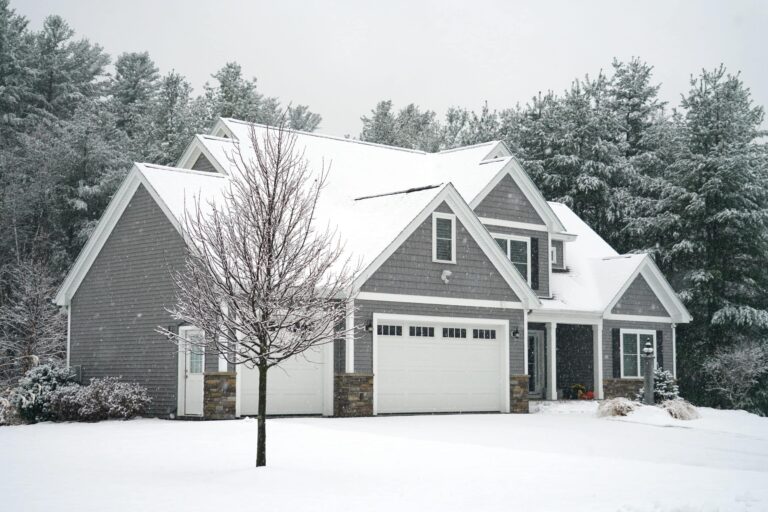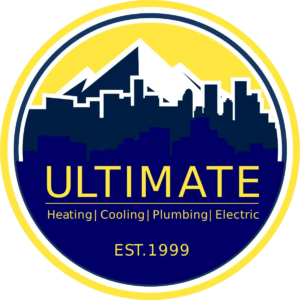Between summer and early fall around the Denver metro area, one of the best things you can do for your home is make sure your HVAC equipment is in good working order before winter arrives. If you fail to do this, you risk mid-winter breakdowns and having to pay for costly emergency repairs.
The good news is, you can significantly lower that risk if you clean and prepare your furnace. Here’s a look at the most critical steps to complete before the winter season starts in Denver.
Steps for Cleaning and Preparing Your Furnace for Winter
• Shut off power and gas
Before attempting to follow any of the steps below, turn off your furnace power and/or gas to ensure your safety and avoid great bodily harm.
• Cover the AC condenser
You’ll want to cover up your air conditioner condenser to protect it from damage from snow, ice, leaves, and more. All you need to do is slide a plywood sheet over the grill and weigh it down with a few bricks. If you want to protect the metal housing, coat it in a thin layer of car wax. Whatever you do, don’t wrap it in plastic as this encourages moisture to accumulate and rust to develop, including on the inside.
• Check, clean, or change your filter
The filter is your furnace’s primary line of defense against harmful dust and debris. If you don’t maintain it, there’s a chance of heat getting trapped in the furnace and causing your HVAC setup to overheat and automatically shut itself down. However, once it has cooled down, it switches itself on again, which leads to another round of overheating. This start-stop scenario is called ‘short cycling,’ which creates excessive wear and tear on your setup. If you ignore it for too long, it will lead to a total breakdown.
When changing your filters, use one that’s compatible with your furnace’s MERV rating. If you use the wrong one, your blower has to work harder. A 1 to 8 MERV rating is sufficient for most homeowners, but those with respiratory conditions may prefer to use a higher-rated filter. Reach out to our team if you’d prefer to have the filter changed by a certified technician.
• Clean interior casings and components
Whether you have a gas or electric furnace in your Denver home, any dirt on the interior will most likely cover components such as the heat exchanger and blower motor. If you don’t clean it out, the performance of your system drops as it has to run longer and work harder to heat up. The dirt can also prematurely wear out electronic components like switches.
All you need to do is vacuum the interior to remove any contaminants. For hard-to-reach areas or stubborn grime, use a soft bristle brush to loosen things up and then wipe down the surface with a slightly damp cloth. However, ensure you leave no moisture behind and don’t disturb any wiring.
• Lubricate blower motor and clean burners
Lubricating your blower motor first involves unscrewing the access panel from your furnace assembly or removing it by hand, depending on the type. Once off, locate the oil ports on the sides of the motor indicated by colored caps. Remove the caps and insert drops of bearing oil while being careful not to overfill, which causes leakage and floor stains. Recap the oil ports when finished. As for the burners, it helps to take a picture to remember how they are placed. Remove them, clean the surfaces with a brass brush, wash in soap and water, and air dry them before reinstalling. We have a team of experts who can do this step for you if you’re in a bind.
• Clean ducts, vents, and flue
A surefire way to maintain indoor air quality is to clean out your vents and ducts. To do this, unscrew the vents and reach into the duct with a long brush to scrape out the dirt. Use a vacuum and damp cloth to get into all crevices and do the same on the vents. Also, ensure the flue is clear of blockages by removing the flue cap. Look for rust, water streaks, or soot on the pipe, too, as this sometimes indicates a blockage.
• Test ignitor
The final step of all is testing the ignitor, which is located behind the burner assembly. You’ll need to disconnect the wiring and test its resistance using a multimeter by placing the multimeter prongs onto the ignitor plug tips. If it shows a reading of 30 to 200 ohms, it’s in good shape and doesn’t need replacing.
• Furnace Maintenance in Denver
Before conducting any of these steps, it’s important to double-check the owner’s manual for your furnace. If you have any doubts, our certified technicians can assist you. Call us at [theme_company_telephone] or send us a message via our online contact form. Your heating and cooling system is only one component to keeping your Denver home comfortable and healthy. Don’t forget about preparing the rest of your home for winter too! Follow our Home Winter Checklist to see if there are any areas that still need attention.


